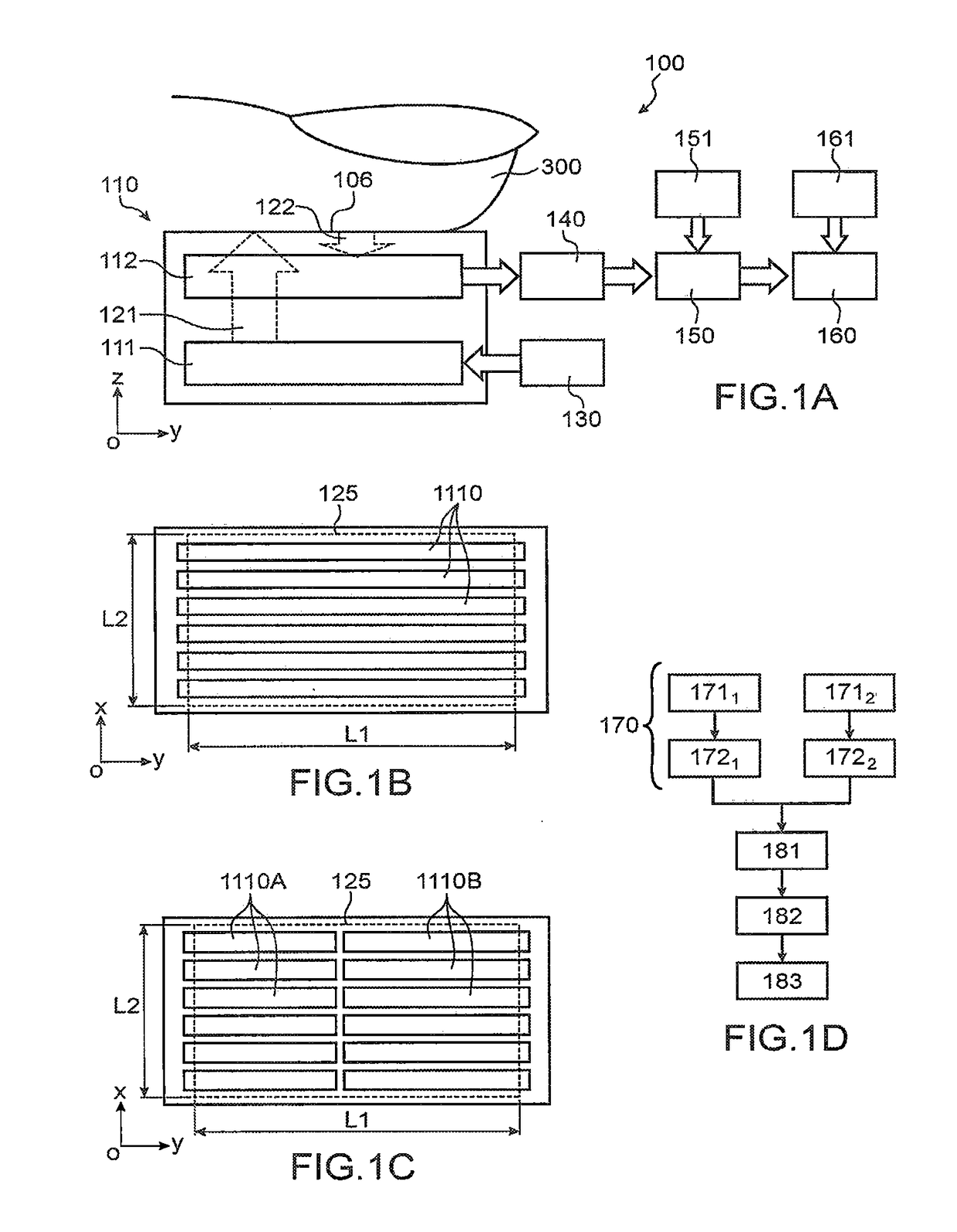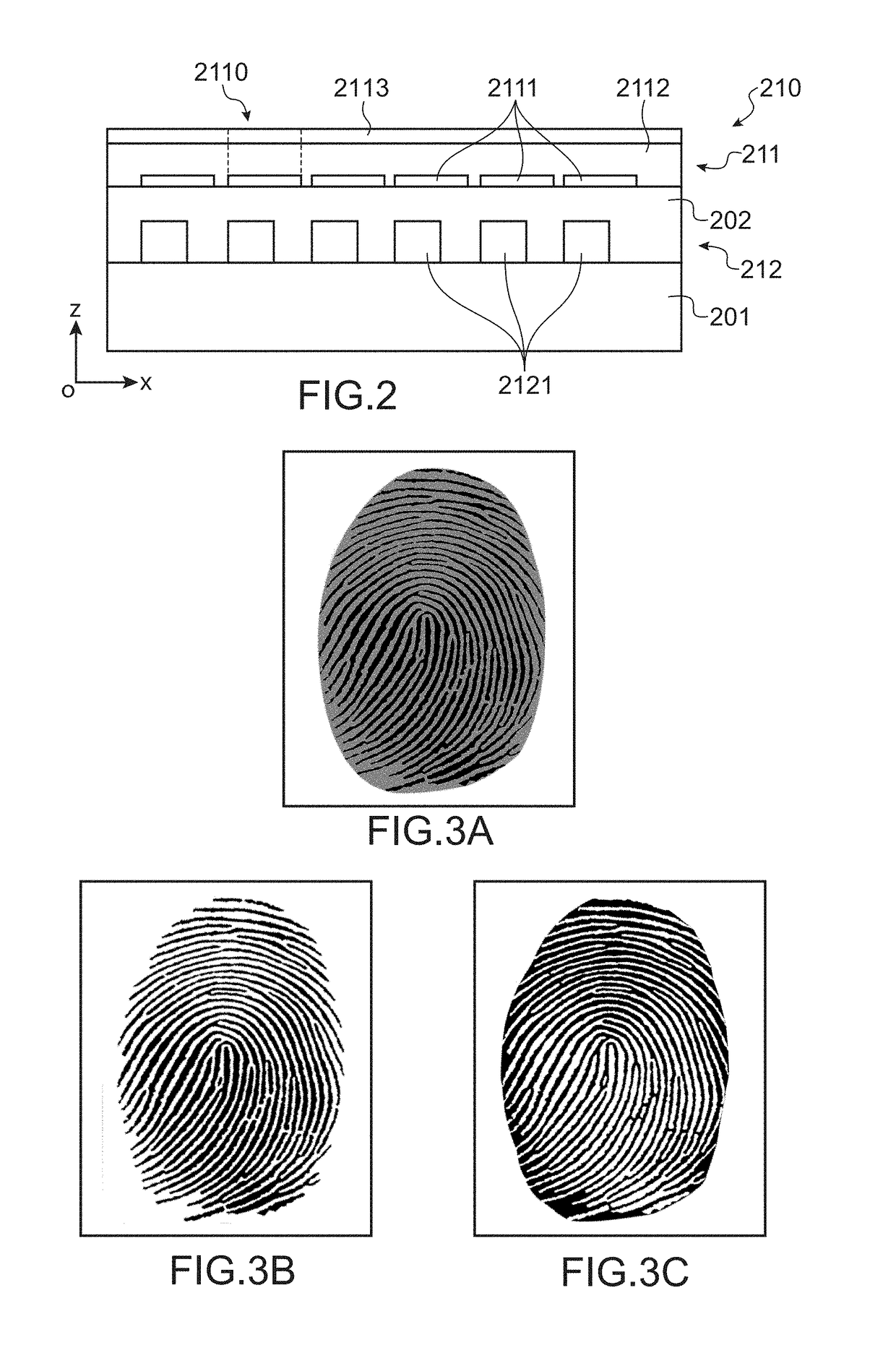Method for recognising a false papillary print by structured lighting
- Summary
- Abstract
- Description
- Claims
- Application Information
AI Technical Summary
Benefits of technology
Problems solved by technology
Method used
Image
Examples
Embodiment Construction
[0056]FIGS. 1A to 1D diagrammatically show a method according to the invention as well as a system 100 specially adapted to implementing this method.
[0057]In order to facilitate the understanding of the invention, we shall begin by describing the system 100, to distinguish a true papillary print from an imitation.
[0058]In what follows, it shall be considered, by way of example and in a non-limiting way, that this is a fingerprint.
[0059]The system 100 comprises a fingerprint sensor 110 comprised of:[0060]a contact surface 106, whereon, in use, the user places his finger 300 in such a way that the skin, in other terms the tissues, or at least the skin of the ridges of the papillary print, are in direct physical contact with said surface 106;[0061]an array optical sensor 112 formed from a plurality of photodetectors, for example PiN diodes (for “P-Type Intrinsic N-Type”), from organic photodetectors (referred to as OPD), from phototransistors, or any other photosensitive element; and[0...
PUM
 Login to View More
Login to View More Abstract
Description
Claims
Application Information
 Login to View More
Login to View More - R&D
- Intellectual Property
- Life Sciences
- Materials
- Tech Scout
- Unparalleled Data Quality
- Higher Quality Content
- 60% Fewer Hallucinations
Browse by: Latest US Patents, China's latest patents, Technical Efficacy Thesaurus, Application Domain, Technology Topic, Popular Technical Reports.
© 2025 PatSnap. All rights reserved.Legal|Privacy policy|Modern Slavery Act Transparency Statement|Sitemap|About US| Contact US: help@patsnap.com



